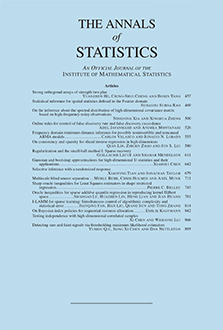Abstract
We consider estimation of the parameters of a Gaussian Stochastic Process (GaSP), in the context of emulation (approximation) of computer models for which the outcomes are real-valued scalars. The main focus is on estimation of the GaSP parameters through various generalized maximum likelihood methods, mostly involving finding posterior modes; this is because full Bayesian analysis in computer model emulation is typically prohibitively expensive.
The posterior modes that are studied arise from objective priors, such as the reference prior. These priors have been studied in the literature for the situation of an isotropic covariance function or under the assumption of separability in the design of inputs for model runs used in the GaSP construction. In this paper, we consider more general designs (e.g., a Latin Hypercube Design) with a class of commonly used anisotropic correlation functions, which can be written as a product of isotropic correlation functions, each having an unknown range parameter and a fixed roughness parameter. We discuss properties of the objective priors and marginal likelihoods for the parameters of the GaSP and establish the posterior propriety of the GaSP parameters, but our main focus is to demonstrate that certain parameterizations result in more robust estimation of the GaSP parameters than others, and that some parameterizations that are in common use should clearly be avoided. These results are applicable to many frequently used covariance functions, for example, power exponential, Matérn, rational quadratic and spherical covariance. We also generalize the results to the GaSP model with a nugget parameter. Both theoretical and numerical evidence is presented concerning the performance of the studied procedures.
Citation
Mengyang Gu. Xiaojing Wang. James O. Berger. "Robust Gaussian stochastic process emulation." Ann. Statist. 46 (6A) 3038 - 3066, December 2018. https://doi.org/10.1214/17-AOS1648
Information





